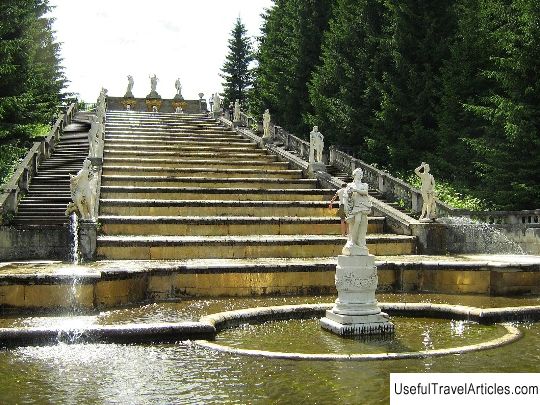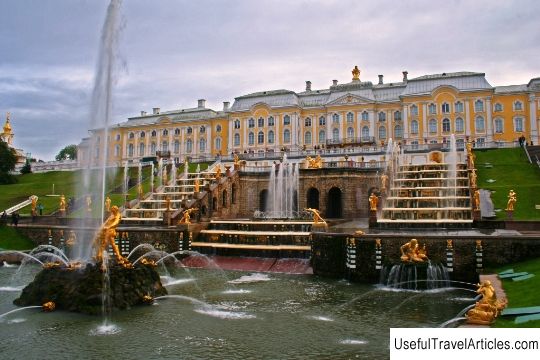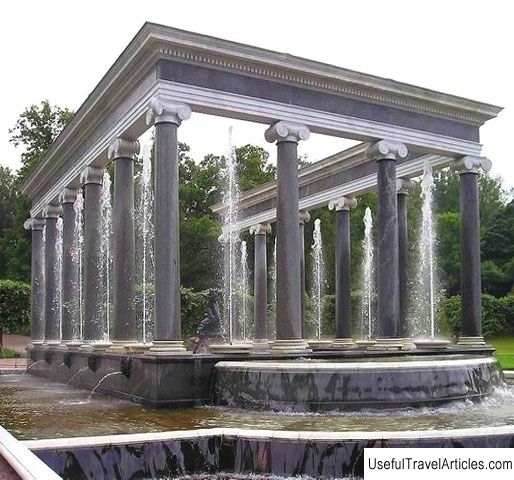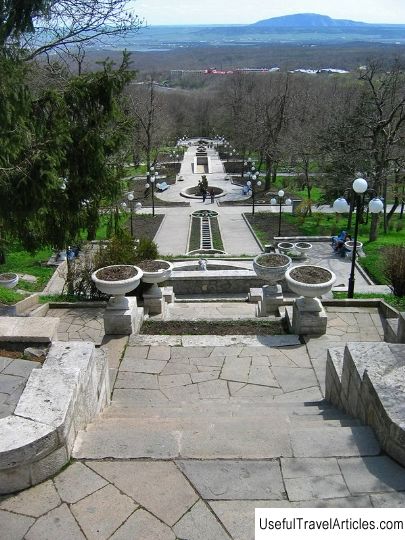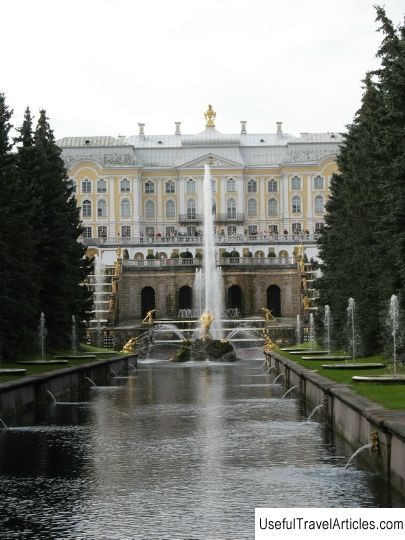Cascade ”Shakhmatnaya Gora” description and photos - Russia - St. Petersburg: Peterhof
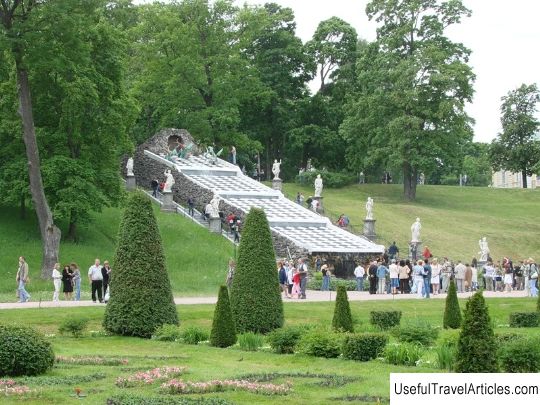
Cascade "Shakhmatnaya Gora" description and photos - Russia - St. Petersburg: Peterhof. Detailed information about the attraction. Description, photos and a map showing the nearest significant objects. Photo and descriptionThe Chess Mountain Cascade, once called the Dragon Cascade, is the largest fountain structure in the eastern part of the Lower Park. The height of the cascade, located on the slope of the terrace, is approximately 21 meters. Four inclined checkerboard-like black-and-white drain steps are located on a block of spongy tuff. The artificial mountain is crowned with a grotto, where 3 figures of bright red dragons with wings rest. Water escapes from their wide open mouths and flows down in a continuous stream along the "checkerboard" steps, falling into a semicircular pool and practically closing the lower grotto. On both sides, the cascade is framed by stairs, and along the stairs there are marble statues from mythological works. A notable feature of the cascade is that you can admire it only from below. Initially, according to the plan of Peter I, the cascade was supposed to resemble the Small Cascade in the residence of the French kings Marly. The emperor himself imagined the future fountain composition in such a way that at the top of the Small Marlin Cascade opposite Monplaisir it was necessary to install "... a cart to Neptunov with four sea horses, from which water will flow from their mouths and will pour over the kashkad ...", and place newts on the ledges, which "... supposedly they played with sea pipes and those newts would act with water and form different water games ..." Braunstein. The construction of the actual cascade (then called the Small Marble) was started in 1721. The author is the architect Niccolo Michetti. During the life of Peter the Great, the cascade was not completed. The work was delayed due to lack of materials and water. And "Neptunov's cart", cast from lead by B.K. Rastrelli, placed in one of the ponds of the Upper Garden. In 1737-1739 architects M. Zemtsov and I. Blank and sculptor K. Osner took up a new project of decorative design of the cascade. The drain steps were sloped. Under each step in the tuff were hidden 5 tubes, from which streams of water burst out. K. Osner made 3 figures of dragons from wood, which were placed on the top of the mountain. On both sides of the cascade, stairs were erected, and marble statues were placed on their parapets. Already 20 years later, after the completion of the construction, drain steps made of wood and trimmed with lead began to decay and decay. In 1769 they were broken and in their place was temporarily stretched a resinous canvas, decorated with a black and white cage. This ornament has been preserved on the new steps, and since then the "Cascade of Dragons" has been called the "Chess Mountain". In 1859, the wooden dragons were removed, and in their place in 1874, lead dragons were installed, cast in Berlin according to N. Benois's sketch. From that time until 1941, the cascade existed almost unchanged. When the Great Patriotic War began, the marble statues were removed and hidden in the ground. The Nazis destroyed the cascade itself, and the dragons were taken out. In 1945, the restoration of the cascade began. Wooden overflow steps were erected, covered with sheet iron. According to the drawings of the 18th century, the sculptor A. Gurzhiy created the figures of dragons from bronze. And in 1953, the completely restored Chess Mountain cascade started working again. One legend is connected with the Chess Mountain cascade. In 1875, the head of the Peterhof Palace Board, Baumgarten, for some unknown reason, decided to "refine" the appearance of the cascade. On his instructions, a bronze sculpture "Satyr and Nymph", transported from the Colonist Park, was installed in his pool, and the upper wall of the grotto was decorated with an eagle with spread wings found at the St. Petersburg bronze factory of Chopin. These "innovations" brought dissonance to the overall design and integrity of the cascade composition. But, despite this, they stood until 1941. A kind of historical justice triumphed during the war years: the Germans took out not only the figures of dragons, but also took the ill-fated eagle and sculpture. After the war the dragons were restored and they did not even remember the Baumgarten "innovations".                  We also recommend reading Museum of Fine Arts and History (Musee d'Art et d'Histoire) description and photos - Switzerland: Geneva Topic: Cascade ”Shakhmatnaya Gora” description and photos - Russia - St. Petersburg: Peterhof. |
